Disclaimer: This article may contain affiliate links. Clicking on them may earn Costa Rica Vibes a commission, at no extra cost to you. Thank you for your support!
How to Celebrate Costa Rica Holidays and Festivals
Are you wondering which Costa Rican holidays might be going on while you are traveling and what you can expect regarding celebrations?
Costa Ricans (also known as Ticos) are festive people who generally care a lot about family, religion, and pride in their country. The way holidays and festivals are celebrated in this country are a good representation of that.
One of the (many) things we love about living in Costa Rica is having the chance to get a taste of a different culture. It is always interesting to see how other countries celebrate the same holidays as you and it is even more interesting to see the celebrations for holidays you have never heard of before.
We also created this guide to Costa Rica holidays so you can plan your vacation accordingly and know what to expect from street closures, bank holidays, and awesome celebrations you can join.
December 31st & January 1st: Ano Nuevo (New Year’s Eve and Day)
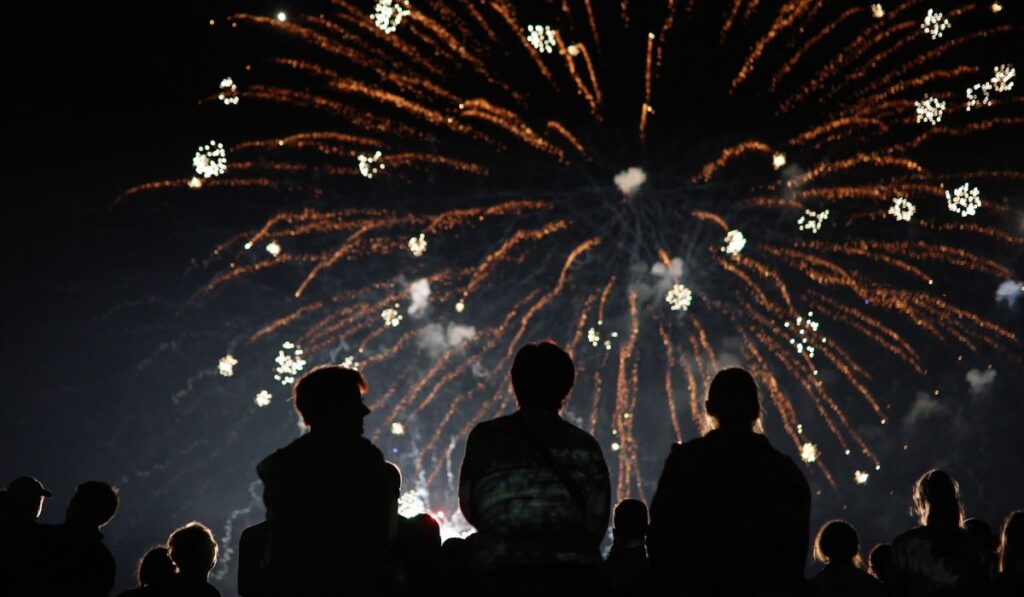
New Year’s Eve in Costa Rica takes place on December 31st (obviously). This event is probably celebrated just like you are used to. It is common for family and friends to gather for a party at someone’s house to count down to the new year together.
If you are interested in celebrating, San Jose, Jaco, Santa Teresa, and Tamarindo typically have the best nightlife scenes in the country.
Costa Rica has a few fun New Years traditions that you might want to participate in. These are:
Eating 12 Grapes: Similar to the Spanish tradition, many Costa Ricans eat 12 grapes at the stroke of midnight. They make a wish with each grape to symbolize their hopes and dreams for each month of the upcoming year.
Walking with a Suitcase: People who are hoping for a year filled with travel walk down the street with a suitcase. It’s believed this act ensures a year filled with journeys and adventures. Since you are traveling in Costa Rica and probably already have a suitcase with you, this sounds like something you can easily enjoy.
Firework Displays: People often have their own firework displays and some towns put on a display as well.

Please try to avoid driving late in the evening on December 31st and even in the morning of January 1st.
The government has really been trying to crack down on drunk driving and there will likely be checkpoints throughout the country, however, drunk driving can still be a problem.
Most people in Costa Rica do not have December 31st off of work, but January 1st is considered a public holiday and businesses will be closed down.
However, a lot of people take the entire week between Christmas and New Years off of work to spend with family.
Late March or Early April: Semana Santa (Easter Week)

Semana Santa literally translates to “Holy Week.” This is the name for the week leading up to Easter Sunday.
The whole week is not exactly a public holiday, but most schools are closed and most people at least have work off for Maundy Thursday and Good Friday.
On Good Friday you can expect to see processions throughout the country reanacating the stations of the cross.
Costa Rica is a predominantly Catholic country and these religious processions are taken very seriously. Please be respectful if you happen to come across a festivity.
The actual day of Easter is not that big of a deal in Costa Rica. In fact, most people spend Easter on the road heading back home after their fun Semana Santa week.
People that celebrate Easter Sunday tend to have a quiet meal with family.
This week is also one of the most popular travel times in Costa Rica. It’s kind of the perfect storm of great weather, tourists having this week off and traveling, and locals having the week off and traveling. You can expect the beaches to be packed and the traffic heading to the beaches on Thursday and Friday tends to be crazy!
If you would like to travel to Costa Rica at this time of year the best thing you can do is to book as early as possible.
Also, plan to avoid popular beaches if you can. I think it is best to aim and visit jungle towns like La Fortuna over the Easter weekend and save the beach days for after.
For more information on Semana Santa including tips for joining in the celebrations, areas to avoid, etc. check out our guide to Easter in Costa Rica.
April 11th – Dia de Juan Santamaria

Dia de Juan Santamaria occurs every year on April 11th. This day is a Costa Rican holiday commemorating the Costa Rican victory during the Battle of Rivas in 1856 against William Walker and his troops.
William Walker was a US citizen who had previously defeated the Nicaraguan government. Next, he had his sights set on Costa Rica and other Central American countries with the idea of developing some type of slave trade empire.
The chances of Costa Rica winning the battle were very slim. However, young Juan Santamaria had the idea to set fire to a building in which Walker’s troops were gathered. The fire caused Walker’s troops to flee. Unfortunately, it also resulted in the death of Santamaria due to enemy fire.
The story about Juan Santamaria seems to be a bit hazy with everything we read saying different things about exactly who this young boy was. However, everyone agrees he helped save the country from William Walker and his troops.
In honor of his sacrifice and defeating William Walker a national holiday was enacted in Juan Santamaria’s name.
On this day you can expect parades throughout the country to celebrate. These parades tend to be put on by schools with kids leading the festivities.
When driving through towns you may have to deal with a few delays due to these parades. If you would like to watch a parade, just ask at your hotel. They should be able to tell you when and where a celebration will occur.
May 1st – Dia de Los Trabajadores (Labor Day)
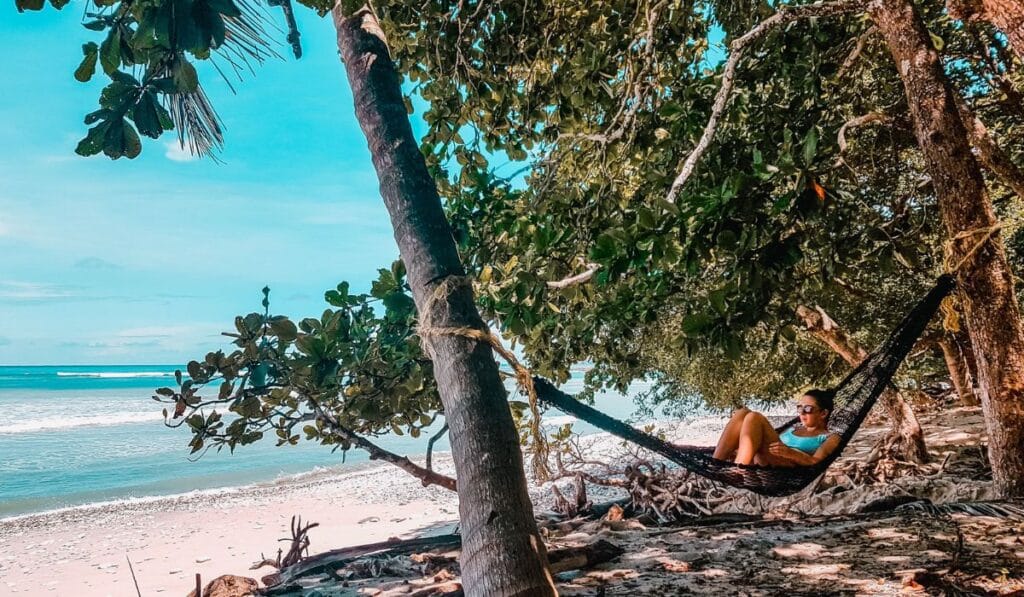
Labor Day is celebrated every year on May 1st in Costa Rica. This is a public holiday so most people have the day off of work to relax.
If this day falls on a Friday or a Monday you can expect the traffic from San Jose to the coast to be worse and the beaches will be more full than usual as everyone tries to take advantage of the long weekend.
Typically this day is celebrated as you are probably used to. Nothing special happens. It is just a day off of work.
July 25th – Dia de Guanacaste
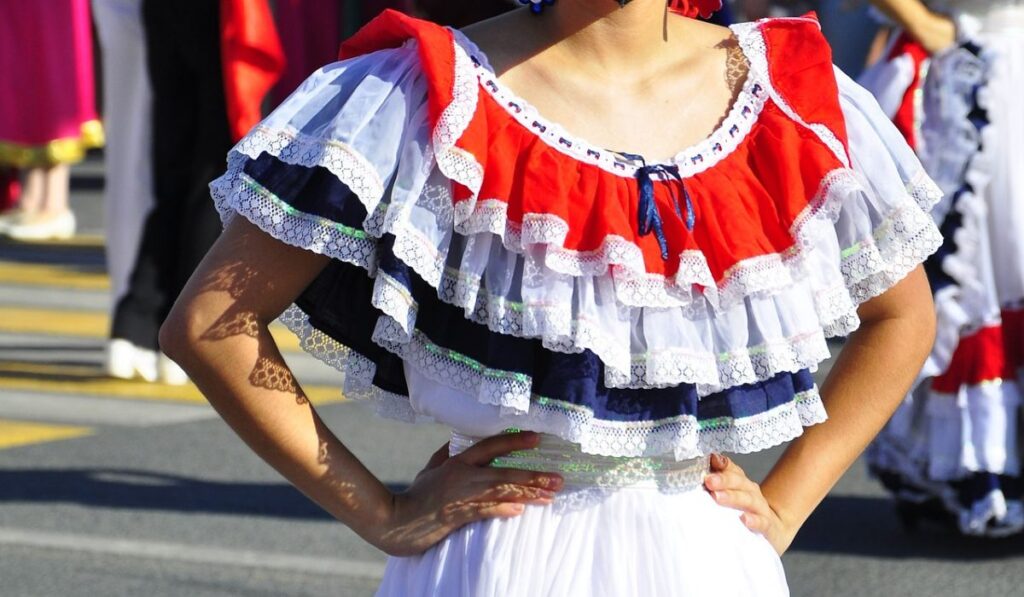
This is a national holiday celebrating the annexation of Guanacaste Province from Nicaragua. It is also often referred to as Annexation of Nicoya.
Basically, in 1824 the people of the Guanacaste region (which then also comprised of what is now considered Nicoya in Costa Rica) were considering leaving Nicaragua and joining Costa Rica. They felt that their beliefs were more closely aligned with Costa Rica than Nicaragua.
So, a vote was taken and the majority of the cities voted to become part of Costa Rica (Nicoya and Santa Cruz voted yes and Liberia voted no).
This historic moment took place on July 25th, and this decision to join Costa Rica is celebrated every year on Guanacaste Day. It is not just a commemoration of territorial annexation but also as a celebration of the choice made by the people of Guanacaste to determine their own destiny.
If you will be in the Guanacaste Province on this day we suggest asking at your hotel about nearby celebrations which you can participate in.
Usually, there are street parties, dances, rodeos and more! Traditional costumes are worn and it is definitely a fun time!
August 2nd – La Romeria de la Virgen de Los Angeles
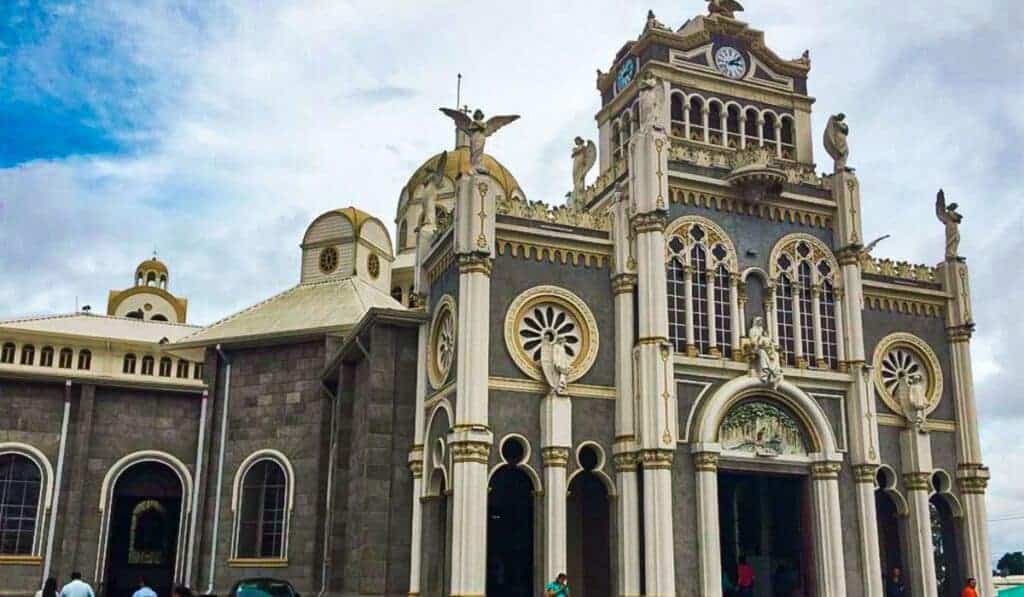
This is the most unique Costa Rica holiday (at least in my opinion).
The event is a pilgrimage in honor of the Virgen de Los Ángeles (Virgin of the Angels), who is the patron saint of Costa Rica.
The story goes that in 1635, a small, dark-skinned statue of the Virgin Mary holding the baby Jesus was discovered by a young indigenous girl in Cartago, (Costa Rica’s old capital city located in the Central Valley part of the country).
Every time the statue was moved to another location, it mysteriously returned to its original spot. This was interpreted as a sign that the Virgin wanted a church built on that site. Today, the Basílica de Nuestra Señora de Los Ángeles stands on that very location.
Every year on August 2nd, hundreds of thousands of Costa Ricans, as well as people from neighboring countries, embark on a pilgrimage to the Basilica in Cartago. Some walk for days and are often barefoot as a sign of devotion. Often, people approach the church on their hands and knees.
The Basílica de Nuestra Señora de Los Ángeles, is an impressive structure with beautiful stained glass windows and religious artwork.
Inside, there’s a stone, known as “La Piedrita,” which is believed to be the exact spot where the statue of the Virgin was found.
If you plan on driving the country in the days leading up to August 2nd you may see people walking as part of their pilgrimage. Some roads may also be closed (especially in the Cartago area) for walkers.
Travel Tip: If you happen to be in Cartago on a different day, the church is usually open to go in. It’s a beautiful building.
August 15th – Dia de la Madre (Mothers Day)
Mother’s Day in Costa Rica is celebrated on August 15th. This date coincides with the Catholic Feast of the Assumption, which commemorates the Virgin Mary’s ascent into heaven. Given Costa Rica’s strong Catholic roots, it’s somewhat fitting that Mother’s Day is intertwined with a day honoring the Virgin Mary.
Mother’s Day is not just another holiday in Costa Rica. It is actually one of the most important celebrations of the year.
On this day, mothers are honored and celebrated for their love, sacrifice, and dedication.
Families come together for gatherings and often attend church services.
Children and fathers present gifts to the mothers in the family, ranging from homemade crafts to store-bought presents.
September 15th – Costa Rica Independence Day
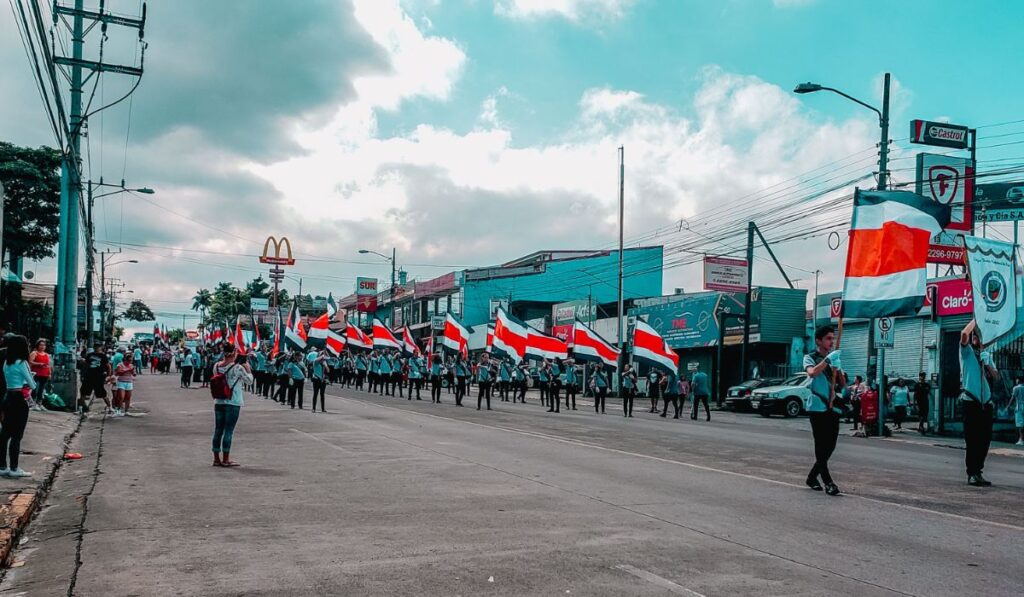
Costa Rica’s Independence Day is celebrated every year on September 15th.
This celebration marks the day in 1821 when Central America officially declared independence from Spanish rule.
Costa Rica, along with other Central American countries such as Guatemala, El Salvador, Honduras, and Nicaragua, all commemorate this significant day.
Here’s what you should know about Costa Rica’s Independence Day:
– On September 15, 1821, the Act of Independence was signed in Guatemala. The news took about a month to reach the small country of Costa Rica! Despite the declaration, it wasn’t until 1838 that Costa Rica became fully sovereign.
– The festivities in Costa Rica usually start on the evening of September 14th with a celebration known as El Desfile de Faroles. This is celebrated with a torch relay, known as the “Faroles Parade.” Children and adults participate, carrying handmade lanterns or “faroles,” which symbolize the 19th-century journey that brought the news of independence to Costa Rica. It’s actually really cute to see. Most kids make these latterns from paper at school and then walk through town with their school classes.
– On Independence Day, the Costa Rican flag, a tricolor of blue, white, and red, is prominently displayed everywhere. The national anthem is also sung, and there’s a deep sense of pride in the nation’s history, culture, and accomplishments.
– There are various public events, including parades featuring children from local schools, traditional dances, and marimba music. The President and other officials also partake in ceremonies to honor the country’s freedom and sovereignty.
– If you want to see a very unique Costa Rica tradition, head to the parade in the city of Cartago. The day culminates with a runner coming down from Nicaragua with a Freedom Torch and delivering it to Cartago. This is broadcast on TV throughout the country and everything stops for the country to sing the national anthem together. How beautiful is that?
– As one of the most important holidays in Costa Rica, most schools, government offices, and some businesses are closed on Independence Day. However, major tourist attractions, restaurants, and hotels typically remain open.
– Everywhere you go around this time, you’ll see a surge of patriotism. Houses, cars, businesses, and streets are typically adorned with the national flags.
– Note that because there are so many parades, you might experience a lot of traffic because some roads will be closed down.
Dec. 1: Military Armed Forces Abolition Day
Did you know that Costa Rica does not have a military? It’s true!
On December 1, 1948, Costa Rica, under the then-President José Figueres Ferrer, made the decision to abolish the country’s military.
The abolition of the military was put in the Costa Rican Constitution in 1949.
Funds that would have been used for military purposes were redirected towards education, healthcare, and other social programs.
This move has, over the years, contributed to Costa Rica’s reputation as a peaceful nation focused on education and environmental conservation.
While December 1 is a day of reflection and celebration, it’s not technically a public holiday. However, some private schools and businesses may be closed.
December 24th – 25th – Navidad (Christmas)

Christmas is a special time in Costa Rica filled with religious traditions and family gatherings.
Families often attend the “Misa de Gallo” (Rooster’s Mass) on Christmas Eve, which is a midnight mass. Churches are beautifully decorated, and nativity scenes, or “portales”, are commonly set up both in homes and public places.
Christmas in Costa Rica is celebrated on December 25th. Some families do things on the evening of the 24th as well, but it is not typical for people to have the day of the 24th off of work.
The typical food in Costa Rica for Christmas often includes tamales. In Costa Rica, tamales are made with masa (a type of dough) filled with meats, rice, vegetables, and spices, wrapped in banana leaves and steamed. Other festive foods might include roast pork, chicken, and traditional desserts like “queque navideño”, a rich fruitcake.
Christmas is a time for presents, but religion and family gatherings are definitely at the center of the celebrations here. However, a lot of people get Christmas trees.
Many families travel between Christmas and New Years. This applies to both Costa Rican families and tourists coming to the country. That means things get a bit crazy. San Jose ends up being empty and the beaches are packed!
If you are planning to travel to Costa Rica over Christmas we strongly suggest organizing your trip early. This includes booking hotels, tours, and your rental car.
In general, the best places to go to avoid crowds are off-the-beaten-path beach and jungle towns. The major beach towns such as Manuel Antonio, Jaco, Tamarindo, and Playas del Coco will be very full.
Calendar of National Holidays
- January 1st: New Year’s Day
- March/April: Easter Week
- April 11: Juan Santamaria Day
- May 1st: Labor Day
- July 25: Annexation of Guanacaste Day
- Aug 2: Patron Saint Day
- August 15th – Dia de la Madre (Mothers Day)
- Sept. 15: Independence Day
- Dec. 1: Military Armed Forces Abolition Day
- Dec. 25: Christmas Day
Smaller Costa Rica Holidays and Festivities
Now you know all the major official holidays in which public businesses are closed.
But, there are also a lot of additional holidays and festivals throughout the year that are not considered national bank holidays. Some are only celebrated in certain regions.
Here is what you can expect.
First Weeks in January – Fiesta de Palmares
The Fiesta de Palmares is a vibrant two-week festival held every January in Palmares, Costa Rica. This festival originates from a religious celebration dedicated to the Black Christ of Esquipulas.
The festival features grand horse parades called a tope (it’s really cool to watch), concerts with national and international artists, an array of local food stalls and traditional Costa Rican bullfighting. Don’t worry, thee bulls aren’t harmed but playfully dodged by participants.
Palmares is typically a quiet town, but during this time of year it buzzes with activity. If you have a chance to participate, this is a great way to get a taste for Costa Rican culture.
We love coming here for this festival!
Second Sunday in March – Dia de los Boyeros
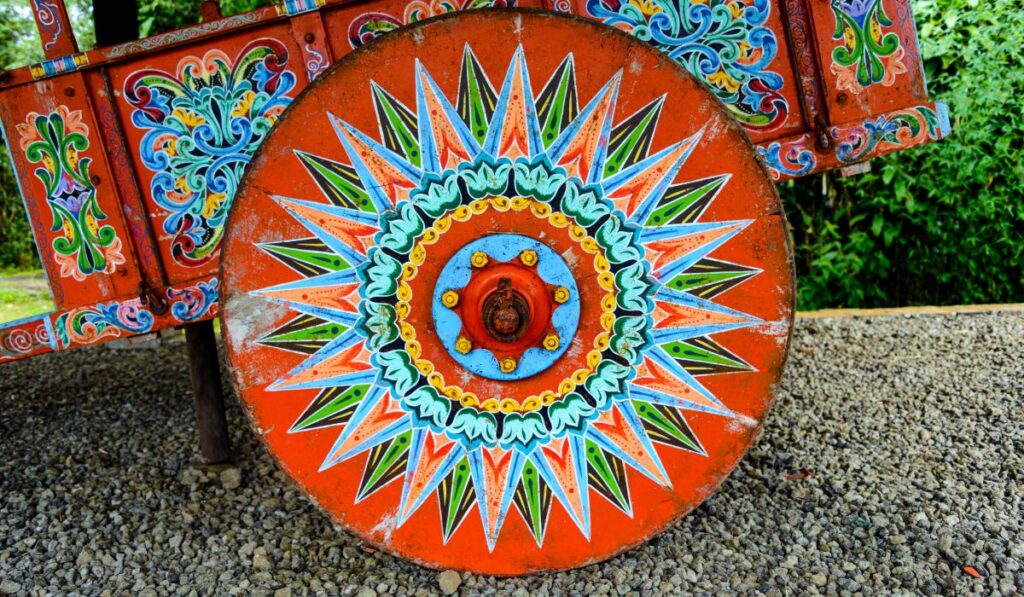
This day is in celebration of Costa Rica’s brightly painted traditional oxcarts. There is a parade through the town of San Antonio de Escazu (near San Jose).
This colorful event pays homage to the country’s oxcart heritage, symbolizing Costa Rica’s roots and historical means of transport.
Participants have a big parade of elaborately painted oxcarts, known for their intricate designs and bright colors.
Third Sunday in June – Dia de Los Padres (Fathers Day)
Día de los Padres, or “Father’s Day,” in Costa Rica is a day dedicated to celebrating fathers and father figures.
Activities often include giving gifts, sharing special meals, and spending quality time together.
October 12th – Dia de las Culturas
Dia de la Culturas or “Day of the Cultures” in English is celebrated as what you probably know as Columbus Day.
This day is not a big celebration in most of the country, however, if you are on the Caribbean coast there are fun Carnival festivities during the week leading up to this day.
Costa Rican celebrate by enjoying festivities that include brightly colored traditional clothing, dancing, and cultural demonstrations.
Nov. 2: Dia de Los Muertos
All Souls Day, known as “Día de los Difuntos” or “Día de los Muertos” in Costa Rica, is observed on November 2nd.
It is similar to Dia de Los Muertos in Mexico, but in general, it is not celebrated to the same degree in Costa Rica. It’s a day dedicated to remembering and praying for the departed souls of family and friends.
Many Costa Ricans visit cemeteries to clean, decorate, and bring flowers to the graves of their loved ones.
Festival de la Luz
The Festival de la Luz, or “Festival of Lights,” is a dazzling event that takes place annually in San José, Costa Rica, usually on the second Saturday of December.
It marks the Christmas season and is one of the country’s most anticipated celebrations.
During the festival, the capital city is illuminated with thousands of lights, and a grand evening parade takes place. This parade includes beautifully decorated floats, dancers, and marching bands.
December 26th – Tope Nacional
“Tope” is the word for horse parades in Costa Rica. This particular horse parade occurs in downtown San Jose. In Costa Rica, these horses are taught to walk in a special way that is really interesting to see.
The horses get prizes based on their footwork techniques.
School Vacations
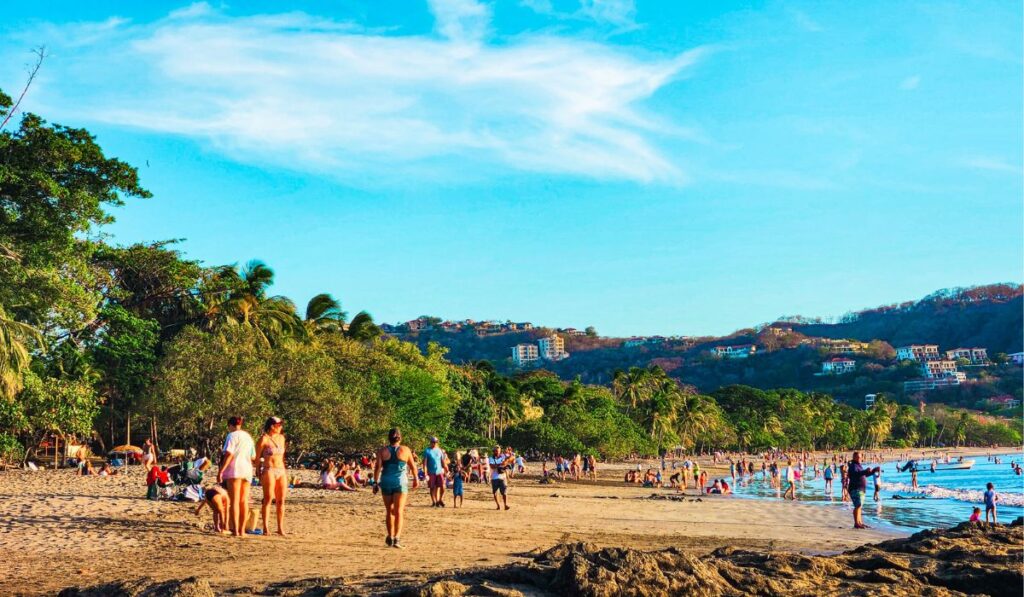
Typically, families in Costa Rica use school vacations as a time to travel together as a family or go to the Pacific coast beaches.
Although parents may still have to work during school vacations, many people take this time off work. This is good to know for you because you can expect the beaches to be more crowded and more people will be driving.
The school year in Costa Rica usually starts during the last weeks of January or the first week in February. Kids typically have the week of Semana Santa (week before Easter) off of school.
They then have a two or three-week break at the beginning of July. The school year end in mid-December.
Kids also have all the national Costa Rica holidays off of school.
What is closed on national holidays?
On public holidays you can expect the following things to be closed.
- Government Offices: Almost all government and public offices, including local municipalities, will be closed on national holidays.
- Banks: Most banks are closed, although some might offer limited services or shorter operating hours.
- Schools: Both public and private schools typically remain closed.
- Public Transportation: While not entirely closed, public transportation services (like buses) might run on a limited or Sunday schedule.
- Some Businesses: Depending on the holiday, some businesses, especially small family-owned ones, may choose to close for the day.
You can expect these things to be open (but potentially with limited hours or services).
- Supermarkets and Convenience Stores: Many will remain open, especially the larger chains, but they might have reduced hours.
- Restaurants: While some restaurants may close, especially smaller or family-run ones, many, especially in tourist areas, will remain open.
- Tourist Attractions: Popular tourist sites and attractions, especially those privately run, often stay open on national holidays, although there might be variations in operation hours.
- Hotels: Hotels and other accommodations continue to operate, and their in-house restaurants and services usually remain available to guests.
- On most national holidays, the majority of Costa Rica’s national parks remain open. This is because these holidays often present an opportunity for local families to visit, and for tourists.
For most employees in Costa Rica, having a day off for certain holidays is at the discretion of the employer. I have heard of some employees being given the day off for national holidays, but it is unpaid.
Things to Note About Holidays in Costa Rica
– Keep in mind that a lot of the Costa Rican holidays are religious observances. Try to be as respectful as possible of these celebrations.
– If you are traveling during a major holiday it is a good idea to book your trip early. We like Booking.com for hotels, Viator for activities, and our favorite local rental car company, Adobe for car rentals.
We always suggest renting a car while in Costa Rica to give you more travel flexibility. Our favorite local rental car company, Adobe, has given us a 10% discount plus other great perks to pass on to you.

Adobe Rent-a-Car
- 10% discount for Costa Rica Vibes readers
- Free second driver
- 0% deductible on Liability Protection Insurance
- Excellent customer service
- New fleet of well-maintained vehicles
Conclusion: Costa Rican Holidays
In conclusion, Costa Rican holidays are always a good time. You can expect a lot festivities and fun things to do. However, it is often essential to book your trip early if you are planning to travel during some of the major Costa Rican holidays.
If you have any questions about planning your vacation, don’t hesitate to ask in the comment section below. We are always happy to help you out!
You Might Also Like:
Costa Rica Travel Details: What You Need to Know
🚗 Should I rent a car in Costa Rica?
Having a rental car will give you the most flexibility when traveling in Costa Rica. This will also allow you to take fun day trips on your own.
- Save 10% Plus Other Perks with Our Adobe Rental Car Discount
- You might also consider; shared shuttle services or private transfer services
🏄🏽 How can I book things to do?
We find that Viator tends to have the most comprehensive selection of activities with secure booking and good cancellation policies.
🍍 I’m overwhelmed with planning. Can you help?
Of course! I suggest joining our Facebook group for specific questions and head to our Start Here Page to get started planning.
✈️ What is the best way to book a flight?
Usually, we have the best luck finding great prices with Skyscanner. Check for flights to both San Jose Airport (SJO) and Liberia Airport (LIR).
🛏️ What is the best way to book my Costa Rica hotels?
We highly suggest Booking.com for hotel bookings and typically use VRBO for Costa Rica vacation rentals.
🗣️What is the main language in Costa Rica?
The main language in Costa Rica is Spanish. Most people working in tourism speak at least some English.
💰 What is the currency in Costa Rica?
The currency used in Costa Rica is the Costa Rican colón (CRC). However, the US dollar is widely accepted in most tourist areas
📞 What is the best way to stay connected?
An eSIM from Airalo is the easiest way to get 4G data while traveling in Costa Rica.
🌴 Is Costa Rica safe?
Generally, Costa Rica is considered safe for tourists. However, like any travel destination, it’s best to use caution and be aware of your surroundings.
🛂 Do you need a passport to go to Costa Rica?
Yes, Costa Rica is its own country. You will need a passport to visit.

Hi! We’re Thomas (the German) and Sarah (the US-er)
We met in Virginia, moved to Germany, and since 2016 we have lived in sunny Costa Rica.
It was a spontaneous decision to move here, but it was the best decision!
Now we spend our days roaming the country to bring you the very best in Costa Rica travel here on Costa Rica Vibes.
Sarah is the writer. Thomas is the one keeping it all together.
Want the whole crazy story?

Sarah McArthur
Sarah McArthur is the co-founder and main writer of Costa Rica Vibes.
She is originally from the United States but has lived in sunny San Jose, Costa Rica since 2016.
She has traveled all over the country and now considers herself a self-proclaimed Costa Rica travel expert.
Want the whole crazy story?

